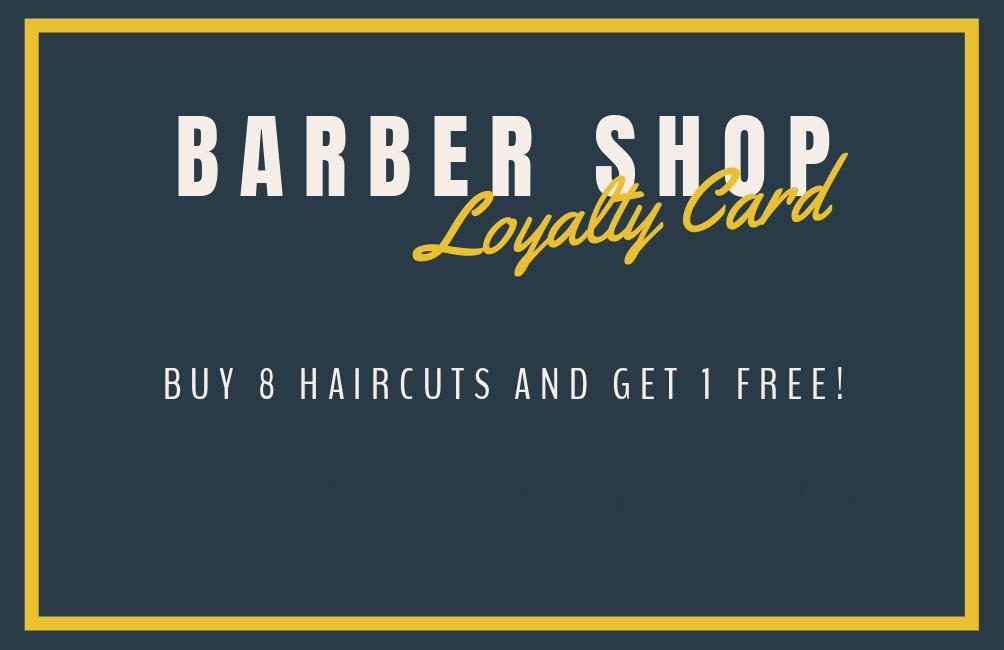Regardless of what time of year it is, most retailers are looking to attract more customers. More customers mean more sales and more sales means a healthier bottom line. The question for many in retail though is how. How do you increase traffic to your store? How do you make consumers more aware of your brand? And how do you get people to buy from you? This is where a dynamic retail marketing strategy becomes so important.
Are you currently doing enough in terms of your retail marketing efforts to attract more customers? Or is your current strategy simply not cutting it? Look at your online presence as that is largely where today’s retail marketing campaigns really take place. How about those social media accounts such as Facebook and Instagram—are you maximizing how you use social media to this end? Retailers cannot afford to overlook the value of Facebook, Twitter, Pinterest among other platforms.
What about your SEO campaign? Do you have one? People are quick to google what they’re looking to buy. Getting out in front of the pack by way of a solid SEO campaign is only going to help you as far as growing that customer base. In this guide, we take a look at 10 of the top retail marketing tips and strategies that any smart retailer should start implementing now.
Table of contents:
- ● What is Retail Marketing?
- ● Key Components of a Retail Marketing Strategy
- ● Pricing Your Products Right
- ● Retail Promotions and Ads
- ● Use of Your Store
- 1. Develop a Highly Professional Brand Image
- ● Hire a Brand Consultant
- 2. Use Customer Data in Your Retail Marketing Plan
- 3. Start a Loyalty Program
- ● Keep it Old School
- 4. Email Printable Coupons and Discounts
- ● An Email Marketing Don’t
- 5. Tell the Story of Your Retail Business and Your Product
- ● Create Product Stories
- 6. Mobilize Your Employees to Engage in Marketing
- 7. Rely on Social Media Campaigns Regularly
- ● Know Which Social Media Channels You Should Be On
- ● 8. Integrate a Remarketing Campaign
- 9. Make Sure Your Customer Service is Superior
- ● Address Negative Online Reviews
- 10. Start a Blog
- 11. Don’t Neglect Your Storefront
- ● Avoid a Too-Narrow Marketing Strategy
- ● The Customer Should be At the Core
- ● Know What You Stand For
- ● In Conclusion…
What is Retail Marketing?
Let’s begin with the basics of retail marketing…What is it and why should you be actively employing a retail marketing campaign? In order to get customers, you have to have a marketing plan in place. Otherwise of course, people are not going to know that you exist, and needless to say, sales will be sluggish. Sales, after all, are what keep you in business.
So, your retail marketing strategy has to be such that people take notice. Not only that, but you want to get them to buy. For retailers then, marketing is going to involve a combination of attracting attention, nurturing relations, and then compelling people to pull the trigger and purchase what you are selling.
Key Components of a Retail Marketing Strategy
We will look more in-depth at specific retail tips; however, it is important to keep in mind that there are certain elements that are crucial to all marketing campaigns, particularly when it comes to retail.
Pricing Your Products Right
This is a major part of a successful marketing strategy. Price too low and your bottom line will ultimately suffer. Have your pricing set too high, and you’re simply driving customers to the competition. Spending some time to review pricing trends and studying the competition to this end can definitely help.
Retail Promotions and Ads
Especially when things financially speaking are somewhat difficult around the world, offering retail promotions and deals is a great way to drum up business. Posting ads in just the right places can certainly help get more people to notice you.
Use of Your Store
This refers to both an online store as well as a brick-and-mortar location. You want to ensure that you are placing products in such a way that people see them and consequently want them. In-store placement can help create a sense of urgency. You can even use product placement strategies to cultivate that “have to have it” mentality.
Once you have the basics down, it is about coming up with strategies that will gain you new customers as well as help you encourage existing customers to buy more. Here are a few tips that can help retailers stand out from the competition.
1. Develop a Highly Professional Brand Image
Given the proliferation of online sellers, basically anyone can call themselves a retailer nowadays. The difference between a fly by night retail store and a truly professional one is all in the image. Every aspect of your retail store has to be on point. If you have a physical store, this of course needs to be staged and designed in such a way that it screams professionalism.
Your retail website and overall online presence need to reflect the seriousness of your brand. Same goes for social media accounts; Instagram and Facebook pages have to give off that “created by a professional” vibe.
Hire a Brand Consultant
Many retailers will actually hire a brand professional to help them up their game. These are people who specialize in cultivating dynamic and noteworthy images. They align all marketing collateral to ensure that every element speaks to the nature of your brand. You can then hire a graphic designer to work on your ongoing marketing materials like social media graphics, flyers, and website graphics.
2. Use Customer Data in Your Retail Marketing Plan
There are so many ways that you can gather data on everything from customer behavior to income levels to buying patterns in general. You can track behavior on your site for example with Google Analytics as well as a couple of different Facebook data gathering tools. This can help get you useful insights into what type of things users are shopping for online, what product pages they most frequent, and how much time they’re spending on the website.
Additionally, you can just keep it simple and survey your customers. A carefully crafted retail survey can reveal quite a bit about people’s expectations, wants and needs. You then, in turn, take advantage of the knowledge learned to create a truly effective marketing campaign.
3. Start a Loyalty Program
f you don’t already have one in place, a loyalty program can definitely help drum up customers and encourage existing ones to spread the word about your brand. Loyalty programs come in all shapes and sizes. There are now apps that allow you to make any such program super easy for shoppers to access.
What this type of promotion does is to, first off, attract new customers intrigued by the idea of earning rewards. And secondly, it helps keep those customers coming in steadily. The more points they earn, the more rewards they receive. And people love getting rewards. Also, look for a loyalty system built into your retail POS software.
Keep it Old School
The card punching concept, though an early version of a retail loyalty program, still works. It gives shoppers something tangible and, in the process, is yet another branding element in your arsenal. There is just something so nostalgic that people really like about a card being punched in terms of racking up points.
4. Email Printable Coupons and Discounts
Who doesn’t love a discount? And it is even better when a buyer doesn’t have to go hunting for a coupon online. Send it directly to their email. They can then print the discount or have a scannable QR code that they can bring up on their phone when they go to buy. You can even use a QR code generator to create branded QR codes that have your company logo for better branding.
Many retailers and retail marketers have indeed found that an email can go a long way toward driving sales. You want to be sure you have a catchy subject line so that people don’t just write off your email retail campaign as spam. And be sure to get to the point. Don’t force a recipient to wade through paragraphs of text just to get to the printable promotion. Here we present you with some of the best tactics to integrate email marketing and social media.
An Email Marketing Don’t
One thing you want to be careful of is creating the type of email marketing content that gets your email directly sent to spam. Make sure that you avoid spammy trigger words such as free and cheap. Also, you might want to identify your brand name right in the “from” line of the email.
5. Tell the Story of Your Retail Business and Your Product
This is one tip that often gets overlooked. Authenticity goes a long way toward building customer relations. And in order to be authentic, you really just need to be honest and open. Consumers want to know who you are. They want to know what you stand for. And they are also generally very interested in the origins of the brand. Are you doing an effective enough job of conveying your retail brand’s story?
Marketing today is in many ways about not marketing. Somewhat confusing, right? Not really. It is about showing people who you are, demonstrating your products and their usefulness, and allowing people to make up their minds. Being overly pushy and sales-centric is probably not going to help you get more customers. So what is the story you wish to tell?
Create Product Stories
Many companies will actually go a step further and create stories for their individual products. People really enjoy reading about how great products were born. What was the light bulb moment that led to that brilliant retail product idea?
6. Mobilize Your Employees to Engage in Marketing
Who says the retail store owner has to do all of the marketing? Or for that matter, even if you’ve hired a marketing specialist, that doesn’t mean you can’t recruit others who work for you as well. Retail marketing and any such marketing campaign can be a team effort. In fact, marketing tends to be far more effective if it is a team effort.
Your employees in some ways are your absolute best brand ambassadors. Many of them will be more in touch with your target audience than you are. So tap into this audience knowledge that they do have. You might want to go a step further and offer incentives for employees to take part in overall marketing efforts.
7. Rely on Social Media Campaigns Regularly
Facebook, Instagram, Pinterest, Twitter, you name it, they have become incredibly well-known names for a reason. Social media now drives so many aspects of our culture and society. More than websites, people will go to their Facebook page for instance to get recommendations regarding products and services they’re interested in. They will look at the Instagram and Facebook page of a store very often before they go to that store’s website. Where retail is concerned, social media, and Facebook among others, have to be a part of any effective marketing campaign.
The great thing is that platforms like Facebook and Pinterest allow you to get creative in terms of your marketing efforts. You can run contests. You might leverage user content (with their permission) and incorporate that into your marketing plan. And ideally, you will be engaging your followers. If they pose questions on social media, answer them. If they leave a review, respond, even if it’s a negative one–especially if it is a negative one. Let your social media audience know you’re listening.
Know Which Social Media Channels You Should Be On
Not all retailers should be on all channels. There are some that simply won’t be relevant to your brand. And if you extend yourself too far when it comes to having to keep up with all of these accounts, you’re just needlessly expending valuable time and energy.
8. Integrate a Remarketing Campaign

Remarketing is an online tactic where retailers will continuously get their products in front of shoppers who’ve already visited their site. Statistics show that people need to see a product six to seven times before they make up their mind to buy. That said, if you are just leaving it up to chance and hoping that they will somehow find their way back to your store and your products, you are losing out on a potential sale.
There are a few different strategies and tips when it comes to the best ways to remarket to shoppers. The key is to ensure the product ads come up on pages relevant to your target audience. You want to make sure that your brand is continuously in front of your core group of users.
9. Make Sure Your Customer Service is Superior
Retail is not just about the products sold; it is largely about the experience in and of itself. So if your customer service is subpar and not where it needs to be, you are going to lose customers. These customers will then spread the word—and as many a retailer knows, word can spread like wildfire.
Are your employees trained to handle trickier situations? Everyone should be on the same page for instance when it comes to addressing a customer complaint. There should be protocol in place. This goes for any online incidents that arise as well. The saying “the customer is always right” is a saying for a reason. Sure, there may be times when this doesn’t necessarily ring true, but you still need to know the best and most tactful way to address it. That is, if you want your retail business to flourish.
Address Negative Online Reviews
This is so important for any retail business. There are inevitably going to be a negative review or two at some point in the company’s life cycle. Being proactive and addressing the complaint directly online shows that you are aware of your mistakes and care about your reputation.
10. Start a Blog
34% of buyers will make an unplanned purchase after reading quality content. Meaning if you can create quality content around the goods you sell, you could increase sales quite significantly.
Use your customer data to delve deep into what your target audience is interested in, and create content that they would consume. If they take a liking to the content you are putting out there, you will be building trust, and soon they’ll be consuming more than just your content!
Check out 17 great blog ideas to get started!
11. Don’t Neglect Your Storefront
If you do have a physical location that is visible to the public and gets a decent amount of foot traffic, you absolutely want to make sure that storefront looks as good as it possibly can. You want to be sure you stand out in a positive way. Certainly, don’t go crazy and create a cluttered vibe, but do make it bold, vibrant, and memorable.
And actually, the same goes for your eCommerce storefront. It can be a little easier to navigate storefront design online, so you have no excuse as to why your storefront doesn’t look amazing and truly reflects the essence of your brand.
The terrific thing about retail marketing is that there are so many things you can do, campaigns you can run and strategies you can execute to try and drive sales. Creativity most definitely counts here! A couple of key tips to keep in mind:
Avoid a Too-Narrow Marketing Strategy
In other words, there are so many avenues and channels open to you. Use them. Test out what works, see what doesn’t, and then adjust accordingly. Don’t pick a single channel or idea and confine yourself to just that.
The Customer Should be At the Core
With any retail marketing effort, it is all about the customer—their wants and needs. You cannot afford to lose sight of this as a retailer. Get to know your customer base. Take the time to learn what it is they’re after in a retail experience.
Know What You Stand For
Nowadays, a retail business generally has to be about more than just selling products. People like to work with companies that have values beyond just the bottom line. What do you stand for in a “big picture” sense? Are you just marketing, or are you really saying something?
In Conclusion…
Whatever direction you decide to take your retail marketing, make sure your strategy is a consistent one. For example, posting on your Facebook page only once in a great while is doing you no favors. All of your marketing efforts need to take into account the two “F’s”: focused and frequent.

anne carson
Anne is a former English professor turned content writer. Holding a PhD in Literature, she spent almost a decade in academia putting that degree to use, until finally realizing it wasn't exactly the best fit. A full-time writer, she's learned a great deal about the numerous subjects. She knows a lot about design trends and design templates. A mom of five (two teenagers and three dogs).








